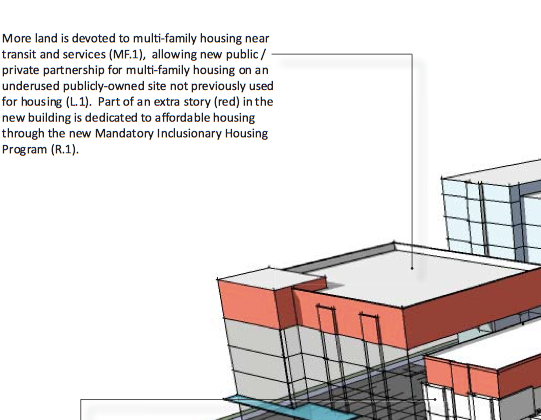HALA’s Most Confusing Recommendation: The Pushes and Pulls of MIZ
This is the second installment of three blogs posts I’m writing about individual recommendations within HALA. I have researched each one and it is no surprise that the award for most confusing HALA recommendation goes to “R1 Partnership for Mandatory Inclusionary Housing – Development Driven Affordability Strategy” or, in local government parlance, Mandatory Inclusionary Zoning (MIZ). The variation between, and flexibility within, each MIZ program make them popular in developing regions such as Seattle; of course this is exactly why they are so complicated. There are nearly an infinite number of ways that the housing market, program design, and local economy interact that should be, but cannot be, considered when developing an MIZ program for an area.
For encouraging economic and social integration, MIZ compares favorably with others programs with similar goals e.g., housing vouchers, or Low-Income Housing Tax Credit (LIHTC). According to a study of 11 jurisdictions carried out by the RAND Corporation, MIZ programs built affordable units in areas where people below the poverty line constitute <10% of the population, compared to a 34 % low-income population where LIHTC units are, and 28 % low-income population where housing-vouchers are used.[1]
Long term affordability of housing is something that renders MIZ programs attractive, most MIZ programs require affordable units to remain that way for decades in order to allow low-income families to reap the benefits typically associated with a higher socio-economic environment. Integrative, long-term affordability, proportional affordability mandates, and developer incentives should make MIZ successful. But, where MIZ operates, how many units are being built compared with how many are needed? And how might MIZ impact the market momentum of a housing development? What does MIZ mean for pricing and sizing of the market-rate housing in the area? MIZ is advertised as a “grand bargain” because it requires minimal government subsidy, but what are some of the others costs to this program we should pay attention to?
Developers are the first to encounter MIZ. When developers assess a project proposal they use marginal analysis of costs and benefits to decide which projects to pursue. Because MIZ is likely to reduce the profit margin that they can anticipate from any given project, in a free market, it is likely that they will focus their attention on developments in areas where MIZ is not in force and, frankly, they can make more profit.[2] To a developer MIZ will look like a form of selective taxation imposed on operating in particular areas.
Where developers have built in a MIZ area, the tax has usually been passed on to the renters and homeowners. Where MIZ was imposed in California, housing prices increased 2-3% faster than where they did not adopt the policy.3 Homes in these areas were also smaller.[3]
There are other unanticipated effects of MIZ: If population is increasing (as it is in Seattle) and new construction is hampered due to increased government regulation, it is probable that new residents will begin to bid against existing residents and drive up the price of even low-quality homes. How will these market-impacts of MIZ address the affordability crisis here? A recent article from the New York Times alludes to how costly the subsidies of MIZ can be;
“…the affordable housing units created by inclusionary zoning are extremely expensive. The subsidy to each family getting an affordable two-bedroom unit at Abington House will be worth nearly $90,000 a year. That money could cover rent for several families in a middle-income neighborhood in boroughs outside Manhattan, like Sunnyside, Queens.”[4]
The grand appeal of MIZ stems from an “egalitarian ideology” but it’s hard to argue against the numbers in this report and various others. [5] It is confusing that the community is focused on this one recommendation, which is sure to come short of addressing the housing crisis, when there are many other effective strategies that, with support, will effectively build affordable homes across the City of Seattle.
[1] Heather L. Schwartz, Liisa Ecola, Kristin J. Leuschner, and Aaron Kofner. 2012. Is Inclusionary Zoning Inclusionary? Santa Monica, CA: RAND Corporation, 13–21.
[2] Powell, R., Doherty, G., “Demographic and Economic Constraints on the Inclusionary Zoning Strategy Utilized for the Production of Low and Moderate Income Housing in New Jersey.” Nassau Capital Advisors, LLC. 2015
[3] Knapp, G., Bento, A., & Lowe, S. (2008). Housing Market Impacts of Inclusionary Zoning.
College Park, MD: National Center for Smart Growth Research and Education.
[4] http://www.nytimes.com/2014/06/08/upshot/affordable-housing-thats-very-costly.html?_r=0
[5] Powell, B. and Stringham, E. “The Economics of Inclusionary Zoning Reclaimed: How Effective Are Price Controls?” Florida State Law Review. 2005. 471 – 499


